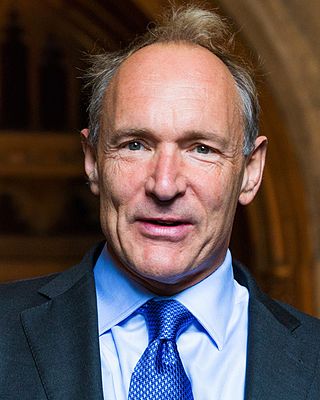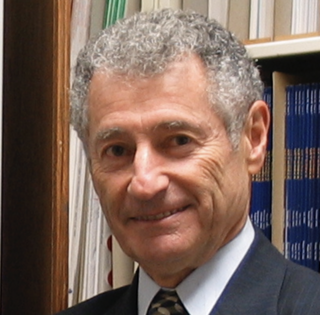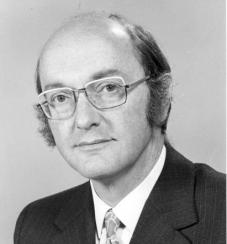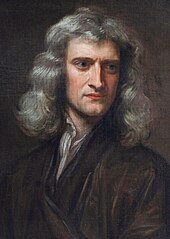
The history of the Internet has its origin in the efforts of scientists and engineers to build and interconnect computer networks. The Internet Protocol Suite, the set of rules used to communicate between networks and devices on the Internet, arose from research and development in the United States and involved international collaboration, particularly with researchers in the United Kingdom and France.

Sir Timothy John Berners-Lee, also known as TimBL, is an English computer scientist best known as the inventor of the World Wide Web, the HTML markup language, the URL system, and HTTP. He is a professorial research fellow at the University of Oxford and a professor emeritus at the Massachusetts Institute of Technology (MIT).
In telecommunications, packet switching is a method of grouping data into packets that are transmitted over a digital network. Packets are made of a header and a payload. Data in the header is used by routers to direct the packet to its destination, where the payload is extracted and used by an operating system, application software, or higher layer protocols. Packet switching is the primary basis for data communications in computer networks worldwide.

The National Physical Laboratory (NPL) is the national measurement standards laboratory of the United Kingdom. It sets and maintains physical standards for British industry.

Leonard Kleinrock is an American computer scientist and Internet pioneer. He is Distinguished Professor Emeritus of Computer Science at UCLA's Henry Samueli School of Engineering and Applied Science.

The Medical Research Council (MRC) is responsible for co-coordinating and funding medical research in the United Kingdom. It is part of United Kingdom Research and Innovation (UKRI), which came into operation 1 April 2018, and brings together the UK's seven research councils, Innovate UK and Research England. UK Research and Innovation is answerable to, although politically independent from, the Department for Business, Energy and Industrial Strategy.

Donald Watts Davies, was a Welsh computer scientist who was employed at the UK National Physical Laboratory (NPL).
The CYCLADES computer network was a French research network created in the early 1970s. It was one of the pioneering networks experimenting with the concept of packet switching and, unlike the ARPANET, was explicitly designed to facilitate internetworking.

The United Kingdom has been involved with the Internet throughout its origins and development. The telecommunications infrastructure in the United Kingdom provides Internet access to homes and businesses mainly through fibre, cable, mobile and fixed wireless networks, with the UK's 140-year-old copper network, maintained by Openreach, set to be withdrawn by December 2025.

Dame Wendy Hall is a British computer scientist. She is Regius Professor of Computer Science at the University of Southampton.

The Board of Invention and Research (BIR) was a British expert-level committee, initiated by the Admiralty of the Royal Navy. Established in 1915, the board was responsible for soliciting expert scientific assistance to solve tactical and technical problems. It was a sister organisation to the Munitions Inventions Department which had been set up in April 1915 and the Air Inventions Committee (AIC), once it became become fully operational in the summer of 1917.

The NPL network, or NPL Data Communications Network, was a local area computer network operated by a team from the National Physical Laboratory (NPL) in London that pioneered the concept of packet switching.

The London Institute is Britain's only independent research centre in theoretical physics and mathematics. It was founded to be an alternative to universities, where scientists have to spend time on teaching and administrative duties. Instead, the Institute gives its researchers the freedom and support to devote themselves to research full-time.

Mike Galsworthy is the co-founder of Scientists for EU and Healthier IN the EU and a media commentator about the effects of Brexit on the scientific community in the United Kingdom, and is Chair of the European Movement UK. He is currently a visiting researcher at the London School of Hygiene and Tropical Medicine (LSHTM) and was previously Senior Research Associate in the Department of Applied Health Research, University College London (UCL).
The Protocol Wars were a long-running debate in computer science that occurred from the 1970s to the 1990s, when engineers, organizations and nations became polarized over the issue of which communication protocol would result in the best and most robust networks. This culminated in the Internet–OSI Standards War in the 1980s and early 1990s, which was ultimately "won" by the Internet protocol suite (TCP/IP) by the mid-1990s when it became the dominant protocol suite through rapid adoption of the Internet.














